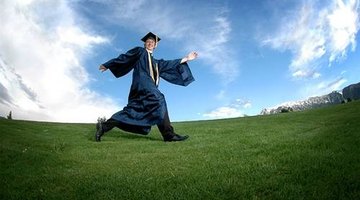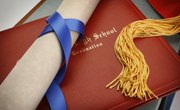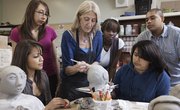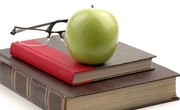Secondary education in Canada offers many options by which student can earn a secondary (or high-school) diploma. There are a variety of schools to meet the students' needs: private, public, religious, charter, vocational, distance-education and home studies. As education is overseen on a provincial and not national level, that means there are different requirements among the provinces, including language requirements (both English and French are spoken in many parts of Canada). This article will focus on diploma requirements for the most populous provinces: Ontario, Quebec, British Columbia and Alberta.
Ontario Secondary School Diploma
The Ontario Secondary School Diploma (OSSD) requires that the student complete eighteen compulsory credits, twelve elective credits, forty hours of community service and the provincial secondary literacy exam. The eighteen required credits are: four in English, three in math (with one class taken in the 11th or 12th grade), two in science, one French as a Second Language, one Canadian history, one Canadian geography, one art, one heath and physical education, and a half-credit each in civics and career studies. The remaining three credits must be taken from the following groups, one in each section: A) English or other language such as French, classical or international, or social science and Humanities (family studies, philosophy, world religions), or guidance, career and co-operative education. B) Health and Physical Education, or arts, or business or co-operative education. C)Science (grade 11 or 12), or technology education (grade 9-12), or co-operative education.
The Alberta General High School Diploma requires students to graduate with 100 credits, mainly at the "30" level, unless otherwise specified. Those credits must include: two English, one social studies, two maths, four sciences, three credits of physical education, and three credits of career and life management. Also, 10 credits must be combined by the courses of career and technology, fine arts, second languages, physical education, knowledge and employability, and occupational courses or a registered apprenticeship program. The final 10 credits may be achieved by completing any "30" level course in addition the those already required.
The British Columbia Secondary School Diploma is granted to students who complete the 10th through 12th grade. It includes 48 required credits, 28 elective credits, and four credits from the Graduation Transitions grade-10 planning portfolio. The required credits are: three foreign language, two math, one fine art and/or applied skills course, two social studies, and physical education in the 10th grade. Of the total credits, at least 16 of the credits must be at grade-12 level, including the 12th grade language arts exam. All others can be a mixture of the required and elective courses. Students will have five graduation program exams (at various grade levels): Language Art 10 and 12; Science 10; Math 10; and Social Studies 11/12. The Graduation Transitions portfolio consists of a demonstration of personal health (the student maintains 150 minutes of moderate to vigorous physical activity per week), 30 hours of community or work service, and a completed transition plan with presentation.
In Quebec, the Quebecois Diplome d'Etudes Secondaires (DES) is awarded to students who complete the requirements of grades 9 through 11. There is an option to complete a grade 12, which is considered pre-university and is required if a student wishes to attend college. The requirements in Quebec for a high-school diploma are: six units of the education language (French or English), four units of secondary language, six units of math, six units of physical science and four units of Quebec and Canadian history.
Arrangements can be made for students who are home-schooled or who want to take courses online or via a distance-education program. Each local school district can provide the requirements for alternative-schooling plans.
Tip
Every province is different with different terminology, grading, years of study required, program tracks, and curricula -- always check with provincial department of education for the current requirements. There are many types of alternative schools available in Canada: alternative, blended, charter, boarding, distance-education (online), and home studies. There are also General Education Diploma (GED) options for students who didn't complete their studies before age 19. There also are religious and secular private schools. Check with the specific entrance and graduation requirements of each, as rules will differ between provinces and even within the same school district.
Warning
If wishing to study in Quebec, be aware that you or your child may be required to study in French, unless you meet the requirements to study in English.
Related Articles
References
Tips
- Every province is different with different terminology, grading, years of study required, program tracks, and curricula -- always check with provincial department of education for the current requirements. There are many types of alternative schools available in Canada: alternative, blended, charter, boarding, distance-education (online), and home studies. There are also General Education Diploma (GED) options for students who didn't complete their studies before age 19. There also are religious and secular private schools. Check with the specific entrance and graduation requirements of each, as rules will differ between provinces and even within the same school district.
Warnings
- If wishing to study in Quebec, be aware that you or your child may be required to study in French, unless you meet the requirements to study in English.
Writer Bio
Jessica Edwards has been a professional writer since 2005, writing for small start-up websites. Publications include articles on eHow, essays in indie magazine "Fallopian Falafal" and "The New Jew," as well as an independent poetry anthology. She holds a bachelor's degree in pre-chiropractic and athletic training from East Stroudsburg and Fairleigh Dickinson Universities, and works full-time as a certified emergency medical technician and firefighter.











